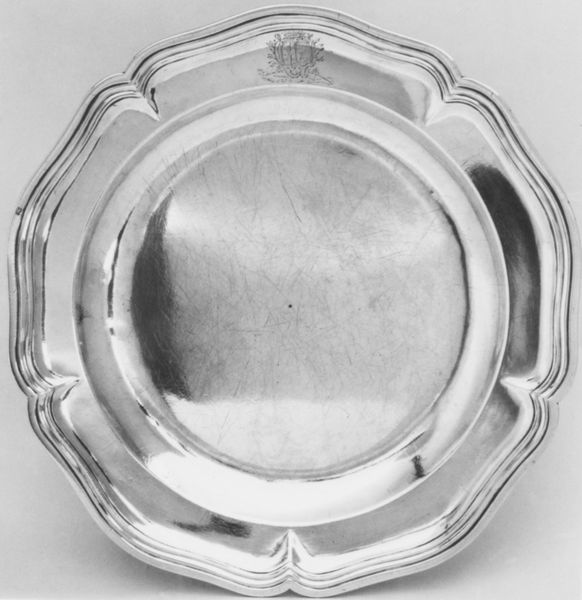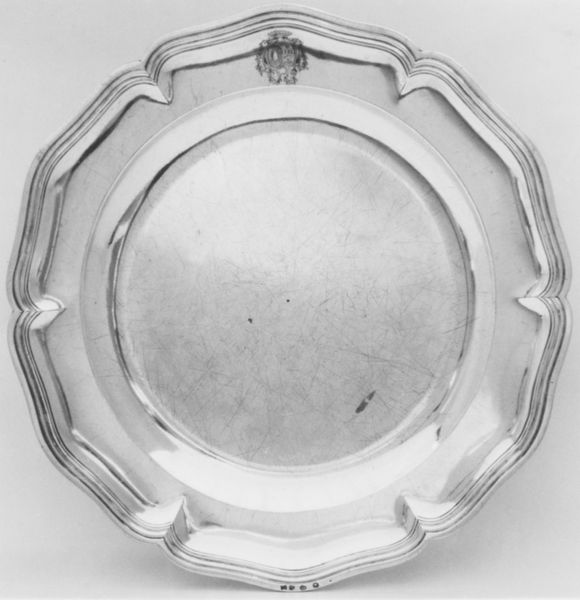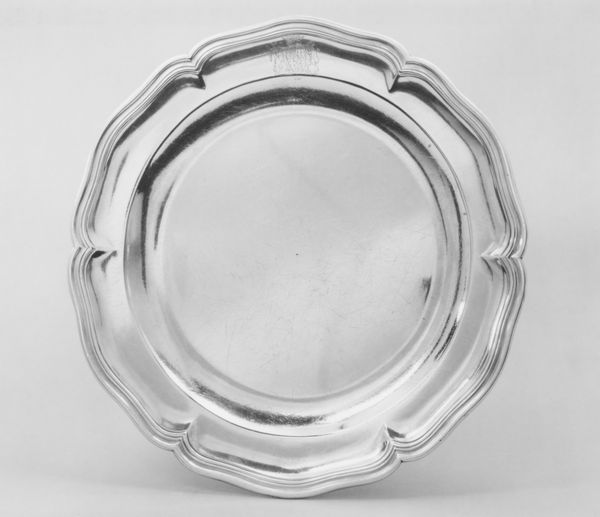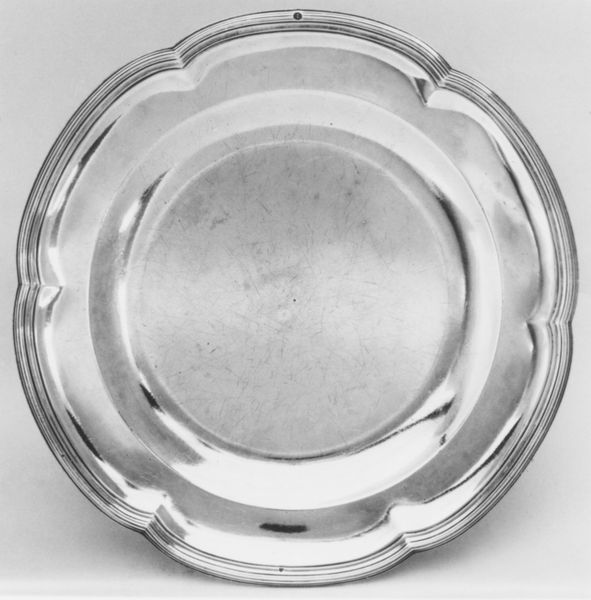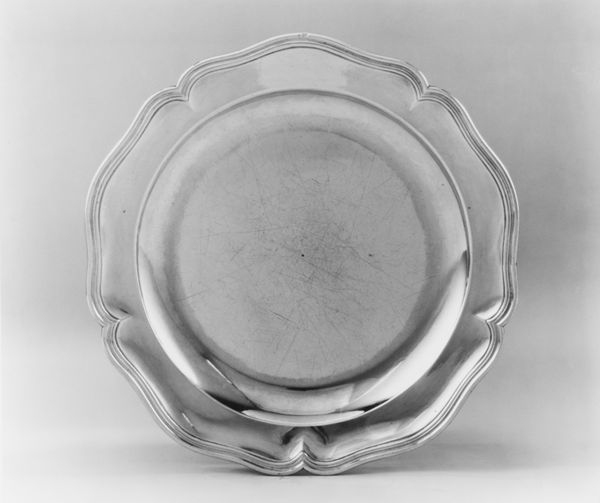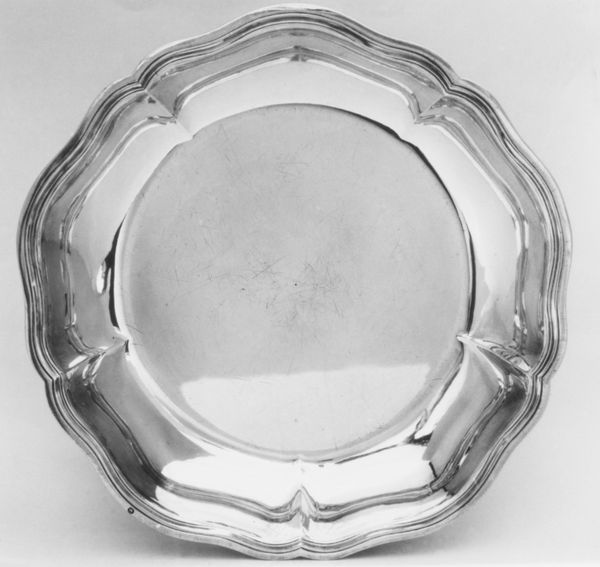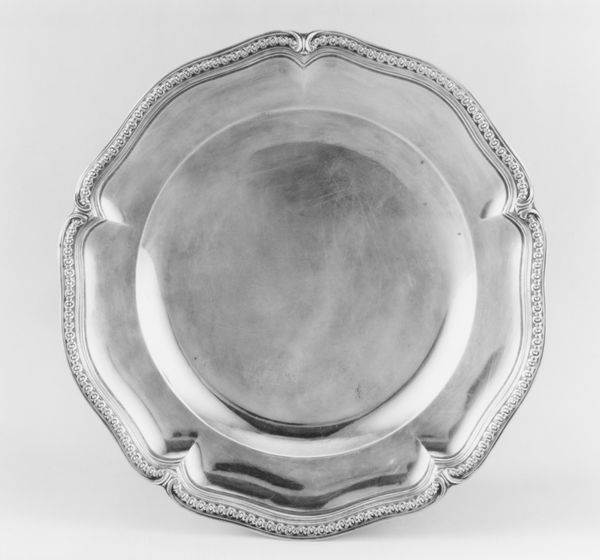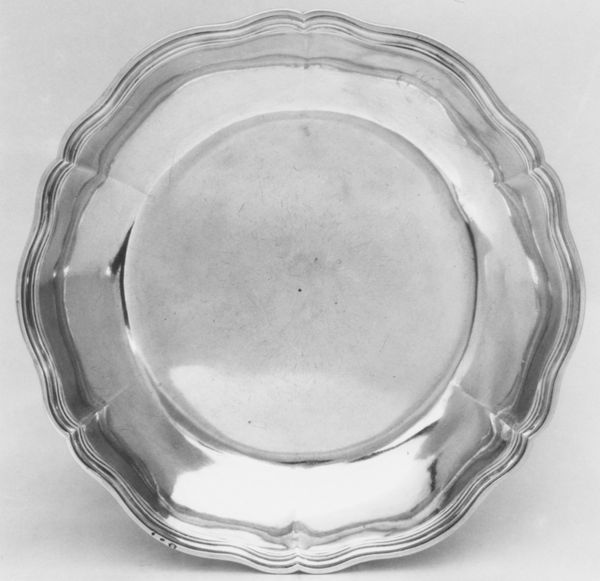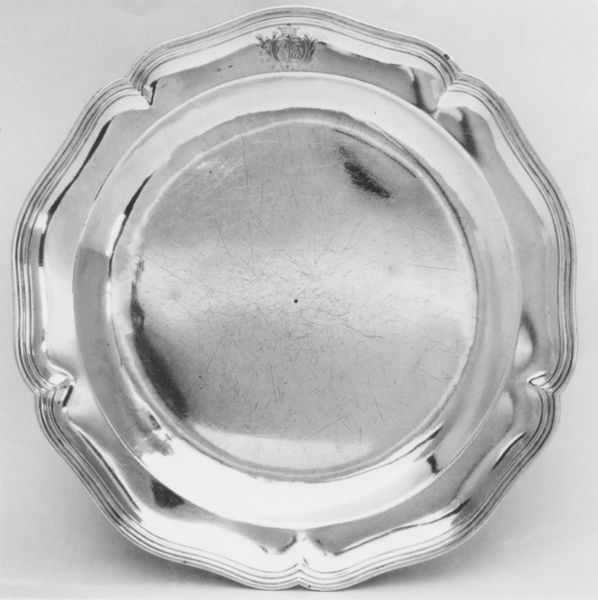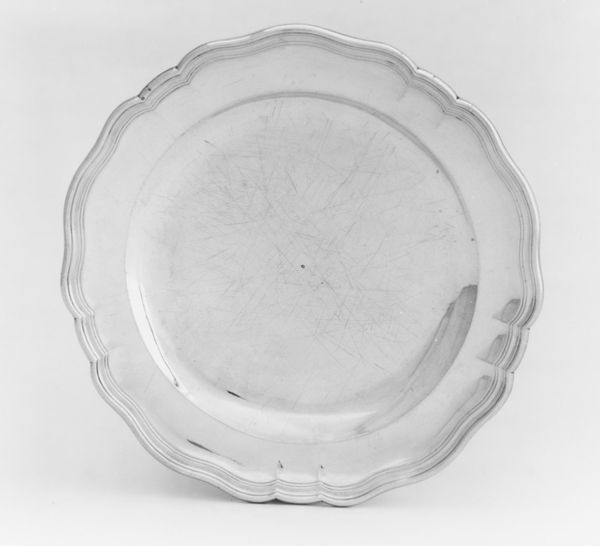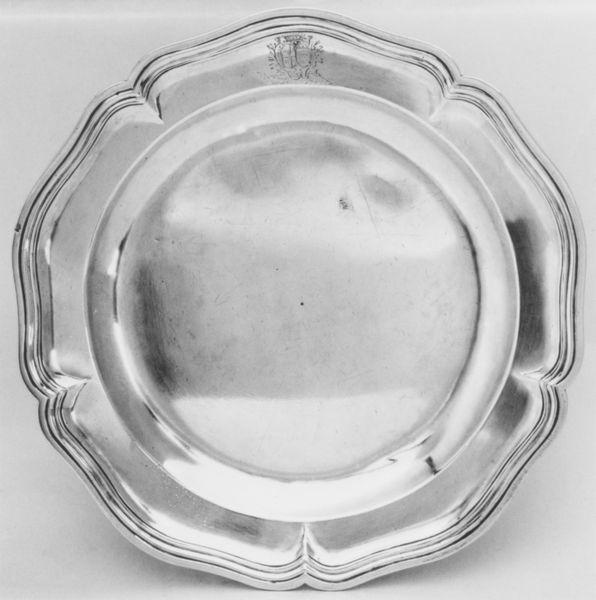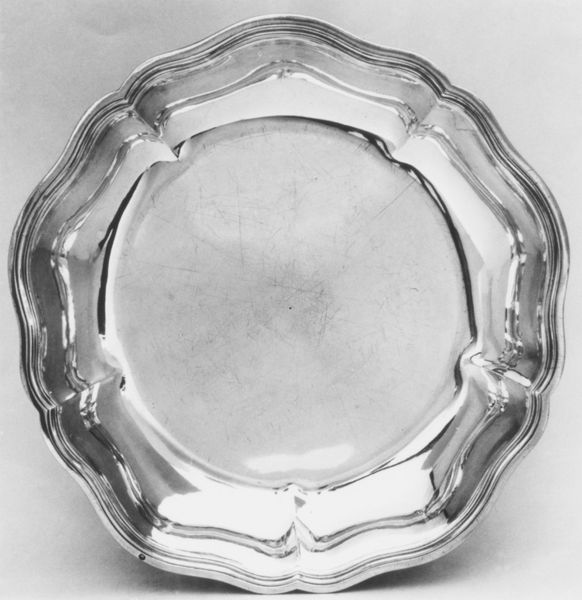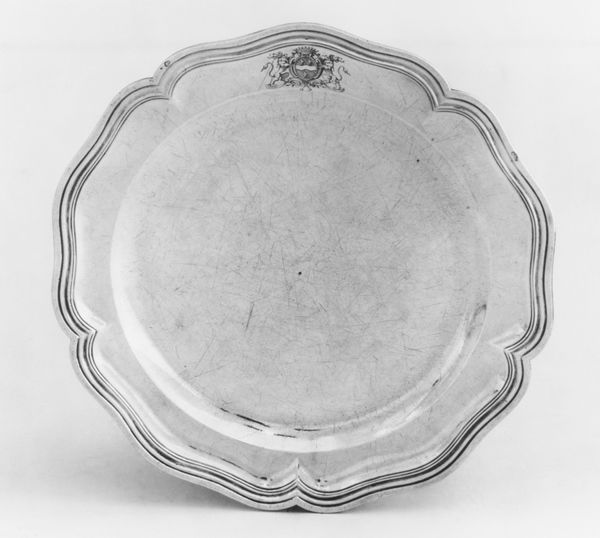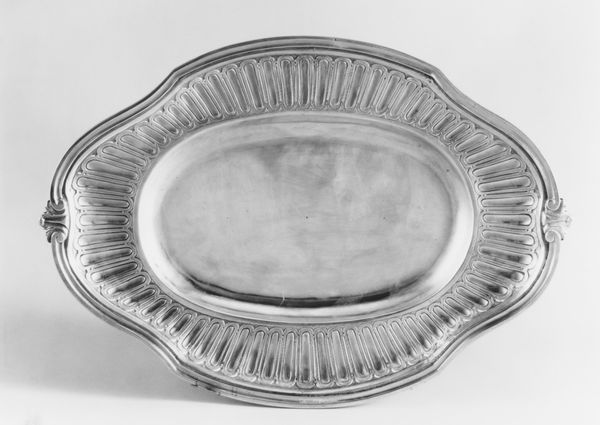
Dimensions: Overall: 3/4 × 10 in. (1.9 × 25.4 cm)
Copyright: Public Domain
Editor: This is a silver plate created around 1765 by Jean Chaslon, currently held at the Metropolitan Museum of Art. It's deceptively simple, yet there's a subtle elegance in its baroque curves. How might we interpret such an object through a contemporary lens? Curator: What I see is a potent symbol of power and privilege from a bygone era. Think about the context: 1765. On the one hand, you have high society displaying their wealth, yet concurrently rumblings of revolution against such stark inequality are emerging, both in America and France. This wasn't just a plate; it was a statement. A display of status while social structures began to crumble. Editor: So, it’s less about the plate itself, and more about what it represents within a wider socio-political narrative? Curator: Exactly. It's about situating this object within the complex intersection of class, wealth, and revolution. Whose labor produced the silver? Who dined from it? Who was excluded? Consider how foodways reinforced social hierarchies and race, just as they continue to today. It allows us to think about who is in the room and who is not, even in 1765, and to explore how such inequalities persists today. Editor: I never considered the layers of meaning embedded in something seemingly so…ornate and…innocent. It does offer a way to consider past social strata and the social disparities of today. Curator: Precisely! By analyzing the Plate's context, we expose a complex interplay of power, artistry, and inequality. Editor: It makes you think differently about simple silverware.
Comments
No comments
Be the first to comment and join the conversation on the ultimate creative platform.
